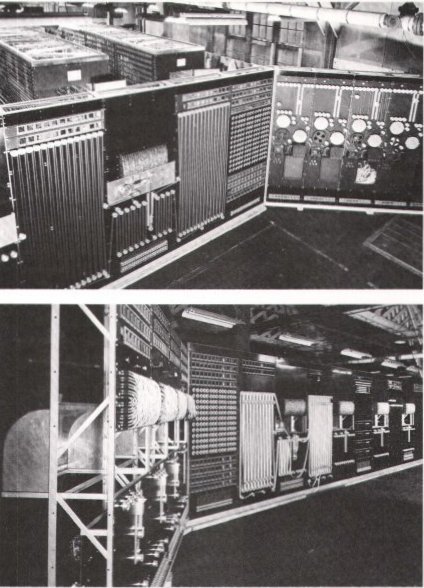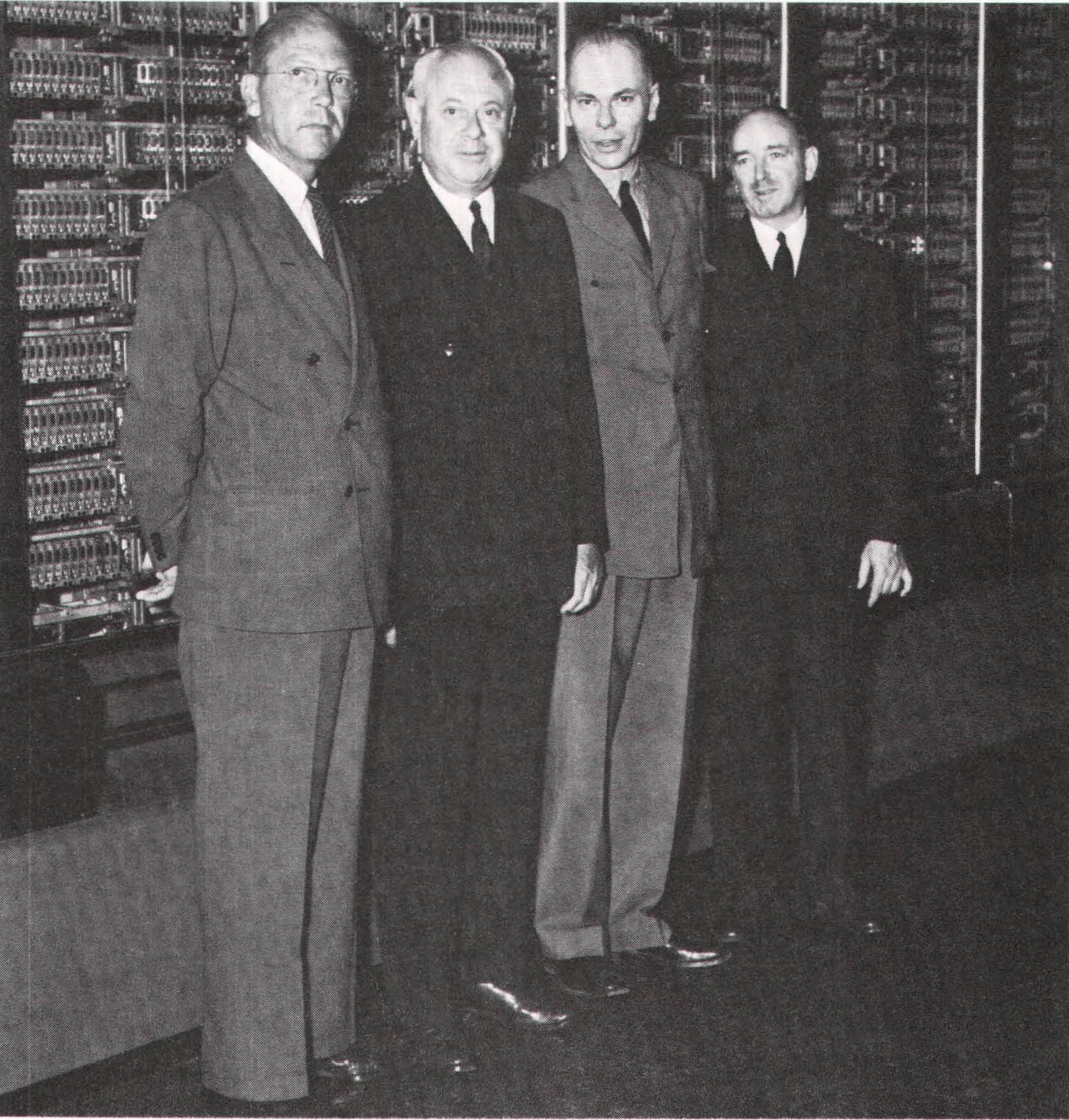
Another well-publicized American calculator project began in 1937 at Harvard University, where Howard H. Aiken, an instructor in applied mathematics, drew up a proposal for an electromechanical calculator. Aiken’s idea was to make a general-purpose calculator by modifying standard punch card tabulators and sorters and ganging them together. He first approached the Monroe Calculating Machine Company for financial backing but the firm turned him down (and, like every calculator manufacturer with the exceptions of Burroughs and the National Cash Register Company, which entered the computer business in the 1950s, eventually slipped into a commercial backwater). Then, in 1939, with the help of a Harvard business professor who had contacts at IBM, Aiken met Thomas Watson, the firm’s president, and IBM agreed to back him.
Aiken’s computational motivations resembled Zuse’s. As a graduate student in engineering at Harvard, he had toiled over differential equations for hours on end, frustrated not by the numerical methods that were used to solve the equations but by the sheer volume of the figuring, which made the solution of certain especially complicated problems well-nigh impossible. The more Aiken pondered the nature of computation, the more he became convinced that the job could be performed by machines. Unlike most of the early computer pioneers, Aiken had heard of Babbage, and his proposal contained a brief, if rather inaccurate, summary of the Englishman’s work. Aiken saw himself as Babbage’s spiritual heir, yet his machine, the Automatic Sequence-Controlled Calculator (ASCC), or Harvard Mark I, had little in common with the Analytical Engine.
An ambitious, driven, blunt-spoken man, Aiken had grown up in Indianapolis, Indiana, where, interested in things electrical and mechanical, he attended a technical high school. As a boy, he was as much of an inveterate tinkerer as any of the other computer pioneers. At the University of Wisconsin at Madison, he majored in electrical engineering and worked part-time as an engineer for the local power company. Then he joined the Westinghouse Electrical Manufacturing Company; but, after more than ten years at Westinghouse, he decided to return to academia, first as a graduate student at the University of Chicago and later at Harvard. So, even though he was only an instructor when he met Watson, Aiken was a mature engineer with a lot of practical experience.
Fortunately, Watson was interested in the application of IBM equipment for scientific purposes. In 1934, he had established a computing center at Columbia University to experiment with IBM machines in astronomy, statistics, and other fields. (Rather grandiosely, the center was called the Thomas J. Watson Astronomical Computing Bureau.) Science wasn’t big business in the 1930s, and most university laboratories considered themselves lucky to have a few good electromechanical calculators, let alone IBM’s costly devices. Although Watson doubted that the scientific market would ever constitute an important source of revenue, he was impressed with Aiken’s proposal and wanted to keep at least one of IBM’s fingers in the scientific pie. Therefore, he decided to build the machine, in accordance with Aiken’s general plan but under the direction of his own engineers, at an IBM plant in Endicott, New York.
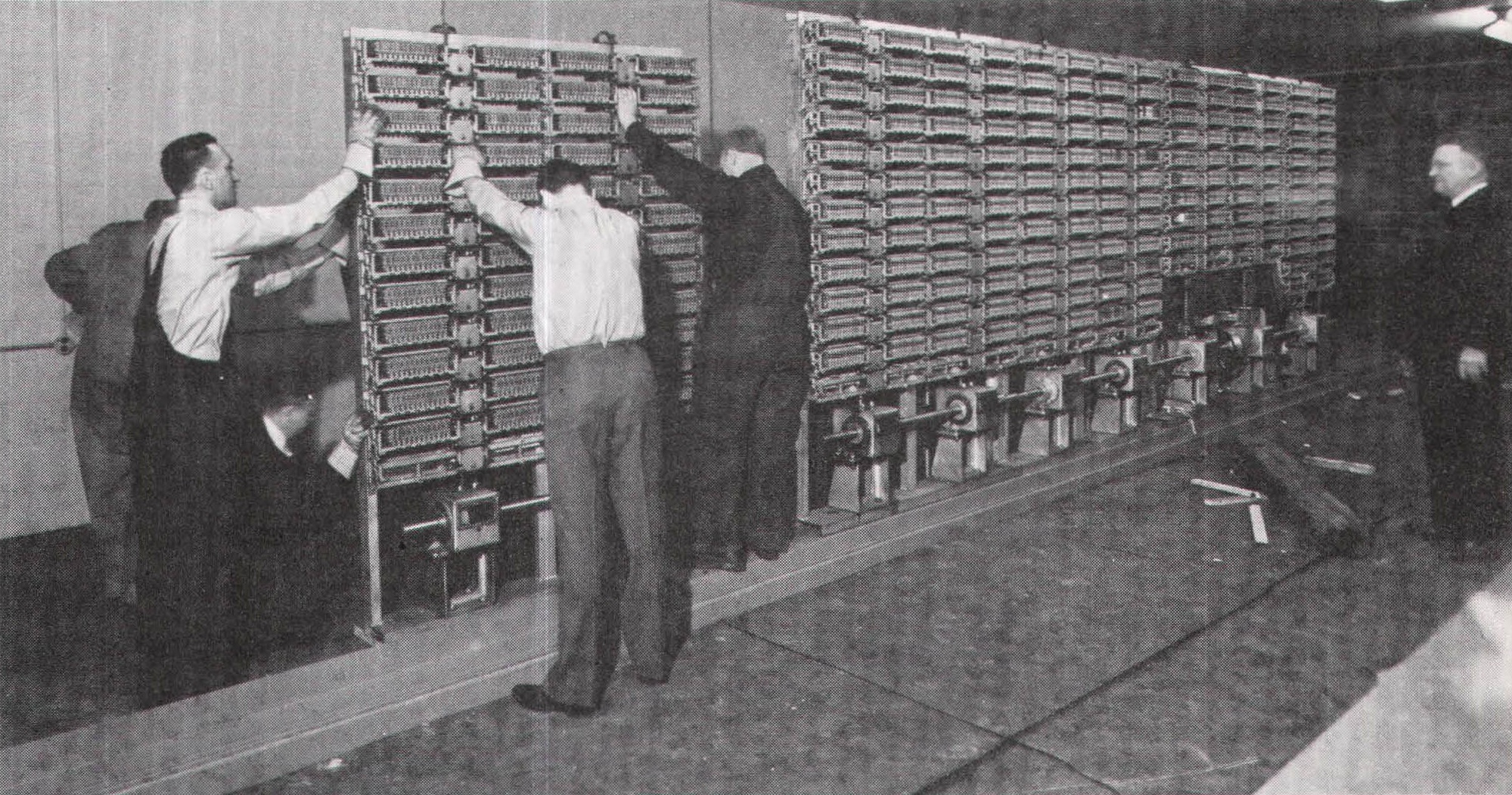
Completed in January 1943, the Mark I was an impressive sight. It was eight feet tall, fifty-one feet long, and two feet thick, weighed five tons, used about 750,000 parts, and according to the physicist Jeremy Bernstein, sounded “like a roomful of ladies knitting.”
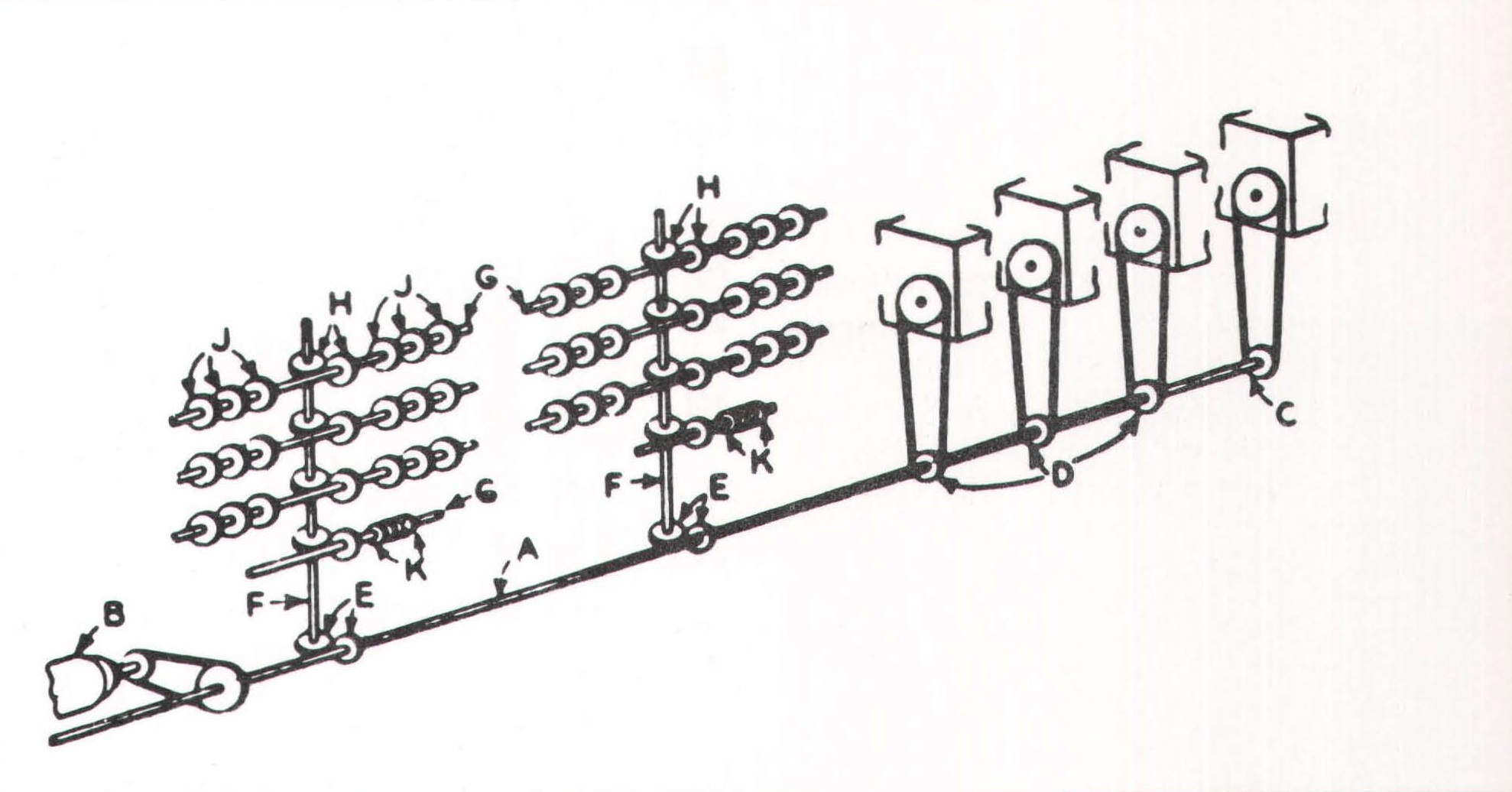
At Watson’s insistence – he had a keen eye for public relations – the Mark I was encased in a shiny stainless steel and glass skin that gave the machine a snazzy sci-fi look and left a strong impression on the public, which got its first glimpse of the this new mechanical wonder in August 1944; the future was here, courtesy of IBM.
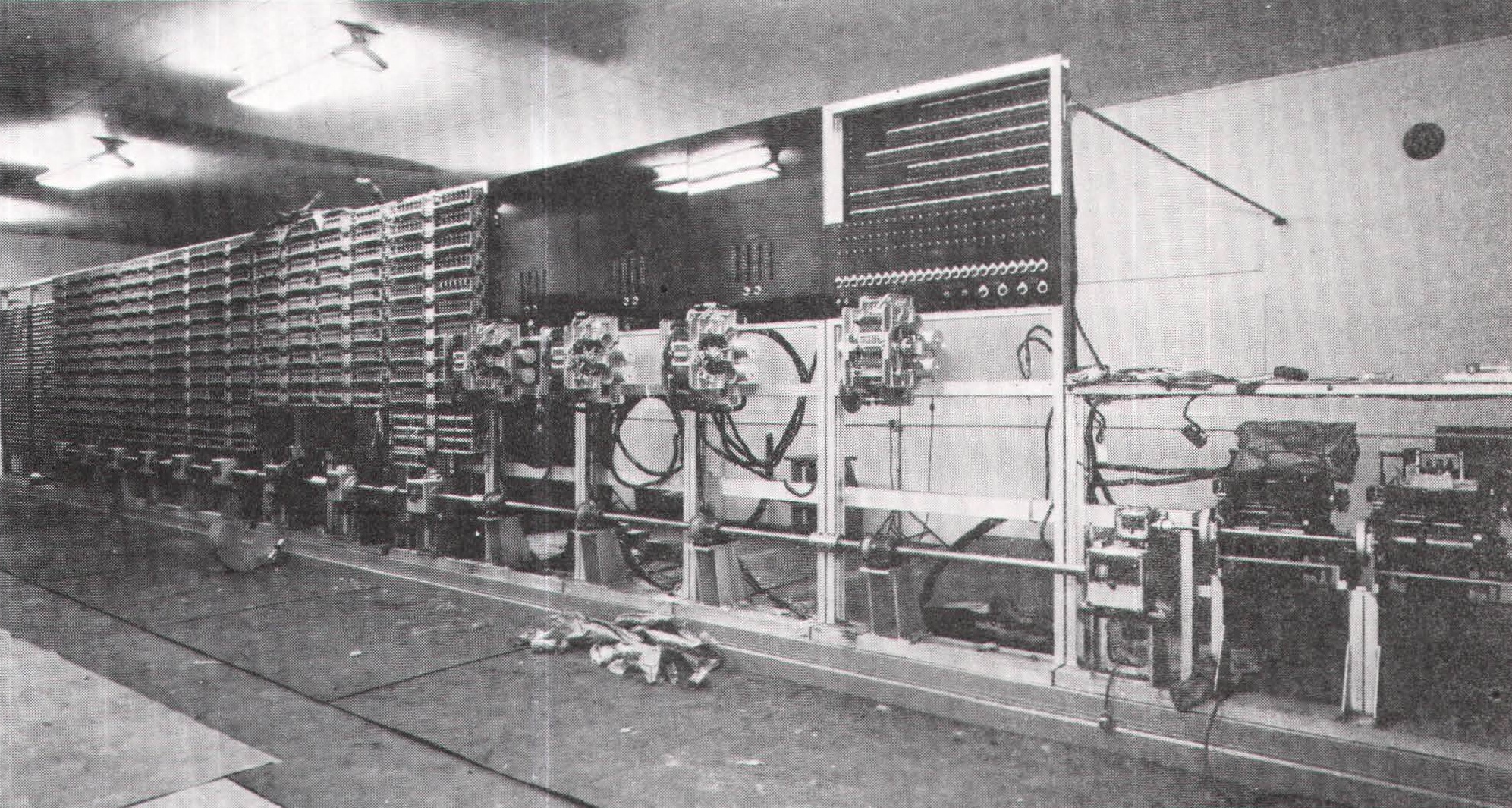
To a public unaware of Zuse, the Mark I was regarded as a great achievement – the first program-controlled calculator. And in a way it was a great achievement, for IBM and Aiken had managed to give life to Babbage’s dream.
But beauty is only skin deep, and like Stibitz and Williams’s Model V, the Mark I was obsolete the moment it was born. It was really a giant mechanical calculator, based on the decimal system, unable to perform conditional jumps, and filled with the usual mechanical gewgaws. Still, it was quite ingenious, a clever combination of old technology and new wit. An electric motor turned a metal shaft that ran the length of the machine. When a number was entered via the paper tape input unit, a clutch coupled one of the Mark I’s three thousand number wheels to the shaft for a specified time span, turning the wheel to one of ten positions. When an addition was called for, the appropriate clutch was engaged, the associated number wheels were rotated, and any carries were relayed to the next number wheel. Instead of the centralized structure that Babbage had given the Analytical Engine, the Mark I’s functions were distributed all over the machine, mostly in seventy-two accumulators, packed with number wheels, that served as memories, adders, and subtractors. Other units performed multiplication and division.

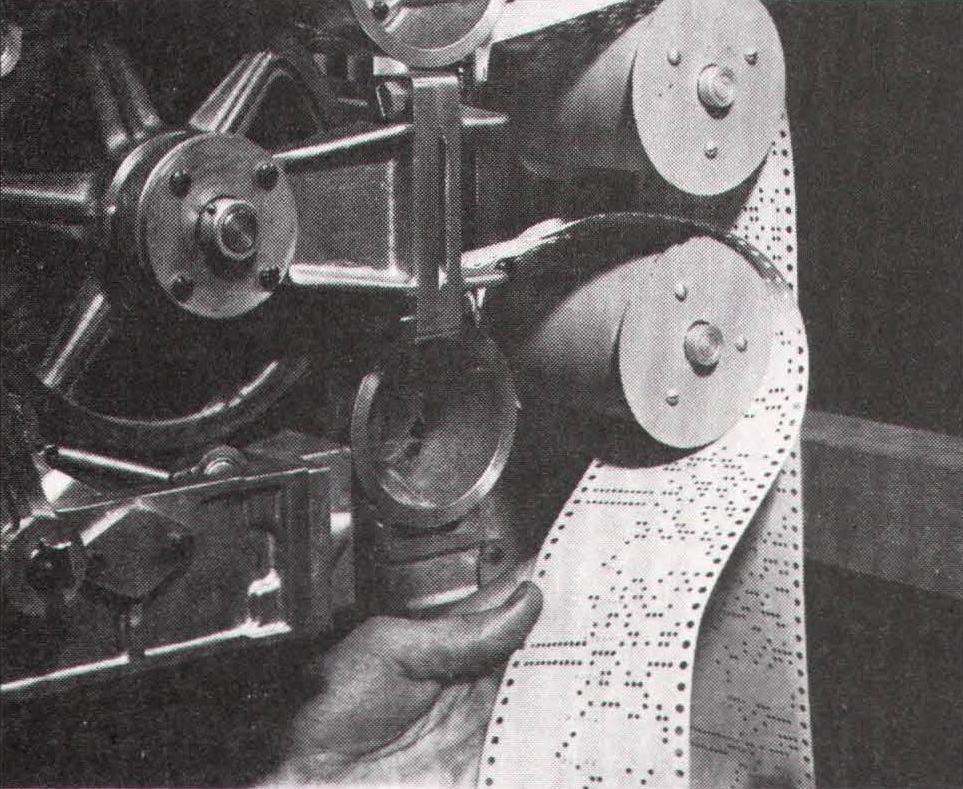
Even though IBM and Aiken had driven into a technological dead end, the Mark I was a powerful computational tool. For example, it could multiply two twenty-three-digit decimal numbers in three seconds and produce the answer on punch cards. Since it could handle basic arithmetic operations quite easily, it was particularly well suited for the calculation of mathematical tables, which became its chief occupation for most of its sixteen-year life span.
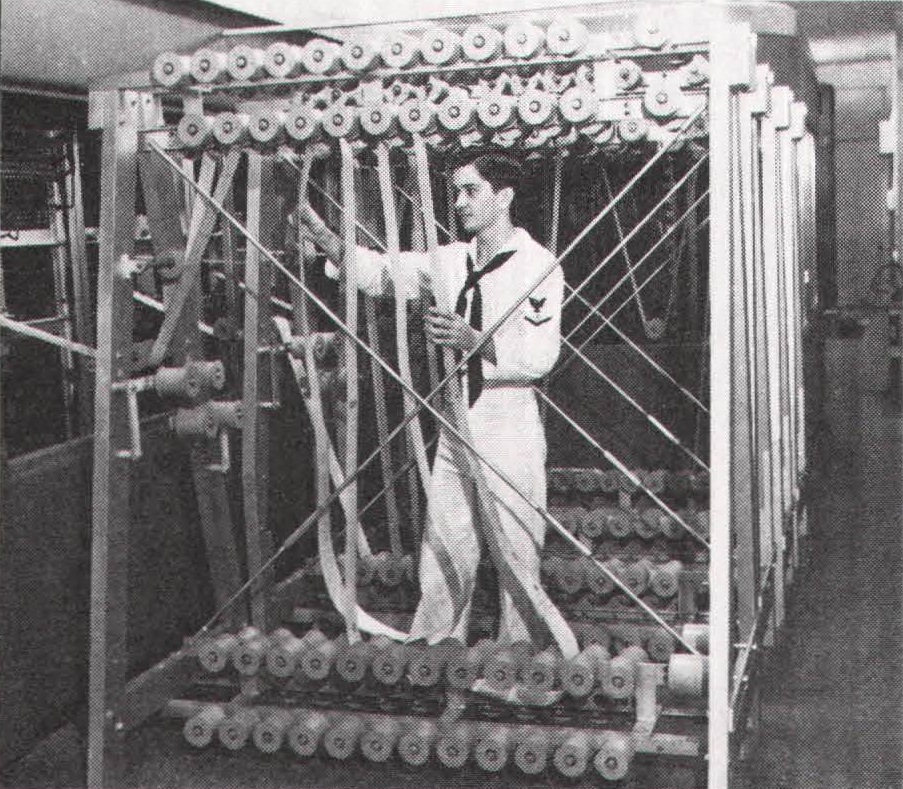
By the time the Mark I appeared, however, ENIAC was nearing completion in secrecy at the University of Pennsylvania, and the Mark I, along with the three Mark-type calculators that Aiken constructed over the next eight years, had little influence on the development of computers. The Mark I had cost an enormous amount of money – $500,000, two-thirds from IBM and the remainder from the U.S. Navy, which had requisitioned it for the war – but it wasn’t a very good investment. The future lay in another direction.
